Cold Color Palettes: Ideas and Inspiration for Cool Tones

Key Takeaways
Cool color schemes focus on frosty blues, mint greens, and gentle grays that denote tranquility, freshness, and contemporary elegance. That's because they support spaces and interfaces to feel larger, clearer and more focused.
💫 Discover Your Complete Color Palette
Ready to discover all the colors that make you look radiant? Our comprehensive color analysis will reveal your complete personal palette - perfect for hair, makeup, and wardrobe decisions.
Build My Palette →Select key cool tones such as icy blue, teal, slate grey, spruce green and light cyan, and verify undertones in different lighting. Reduce warm undertones to a minimum in order to preserve the cohesion and crispness of the room.
Range temperature within the cool scale from deep navy to light sky blue to form mood and depth. Mix intensities and saturations to add interest without adding clutter.
Counterbalance with carefully controlled warm accents — coral, or gold — to avoid sterility and direct attention. Incorporate neutrals — such as white and gray — to anchor the palette and enhance legibility.
Use cold palettes when calm and trust are important: think healthcare, finance, tech, minimalist interiors and digital interfaces. Test contrast for accessibility, then adjust for context and culture.
Construct your palette by establishing core cools, layering on neutrals, and putting in one accent. Prototype in actual lighting or on screens, to make sure you get the emotion you want.
Cold color palette – a combination of colors that are cool in tone, think blue, green and violet with gray or muted undertones.
Utilized in web, interiors and brand design it composes calm tone, sharp focus and clean contrast.
Designers combine ice blue and slate gray, mint and charcoal, or lavender and soft white to establish mood and direct the eye.
To help root decisions, the following passages provide application, advice and proven combinations.
📚 Recent Articles
What is a cold color palette?
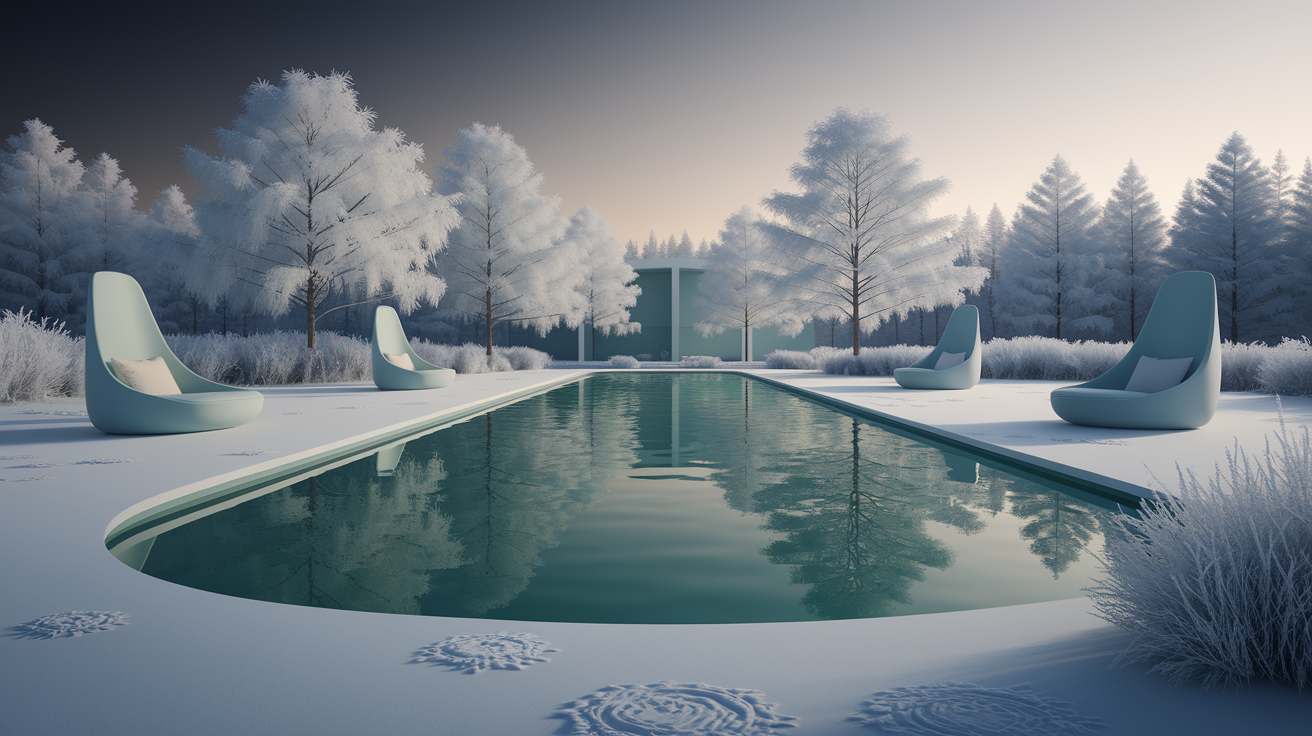
A cold color palette is a palette dominated by icy blues, cool greens and pale grays, reminiscent of winter light and clear water. It indicates calm, freshness and trendy in design.
In rooms and on screens, these hues expand space, calm visual clutter, and encourage concentration. They tend to recede, which adds depth and makes spaces feel bigger.
Typical use cases include:
- healthcare and wellness spaces
- minimalist websites and dashboards
- bathrooms and kitchens
- tech branding and product UIs
- galleries and museums
- spas and meditation rooms
1. The core colors
Key choices are frosty blue, turquoise, ash gray, conifer green and pale cyan. Most palettes rely on blue-grays as the tone, then float pale green or sky blue for lift.
These gentle, calming shades resonate with sea breeze and spa tranquility, while vibrant teal or aquamarine can infuse a fresh zest.
Keep it uniform by separating pure cool shades from those with warm undertones. A yellow undertone gray reads muddy next to a crisp blue.
A teal with too much yellow leans olive, tilting the feel into warmth. Make sure to keep undertones aligned so the set feels fresh and cohesive.
For rapid handoff, construct a simple reference table with hex codes. Add 2 – 3 tints and one deep shade per color. Go for picks that seem crisp, airy and refreshing, not chalky or flat.
2. The role of undertones
Colors that have blue, green or purple undertones fall on the cool side of the wheel. They define how a palette soothes the eye and models dimension.
Check swatches under daylight and typical indoor lights (3,000–5,000 K) to verify actual coolness. Certain paints and fabrics turn 'warm' under warm LEDs.
Steer clear of intense warm undertones—red, orange or yellow—when you need seamless synergy. Map neighbors with a color wheel and compare undertones side by side for clean, cohesive sets.
3. The temperature spectrum
Cold palettes span from deep indigo and navy to sky blue, mint, and light cyan. Higher kelvin light reads cooler, which complements these shades and their calm vibe.
Cooler hues slow the pulse, aid concentration. Blend intensity for depth: navy for anchors, slate gray for balance, pale green for air.
Shift cooler in the range to alter the scene–navy + teal = sleek + urban; sky blue + pale green feels breezy + restorative.
Cool colors recede, bringing distance and space in layouts and rooms.
4. The contrast with warmth
Match cool fields with warm accents—coral, soft orange, warm ivory—to ignite contrast and lead the eye. Too much cool can feel sterile, a judicious warm note makes the space inviting.
Helpful complements:
- coral (#FF7F50)
- warm sand (#D6B48C)
- muted terracotta (#C97C63)
- goldenrod (#DAA520)
Use contrast to highlight buttons, headlines or feature walls, leaving cool colors as the serene backdrop.
The psychology of cool tones
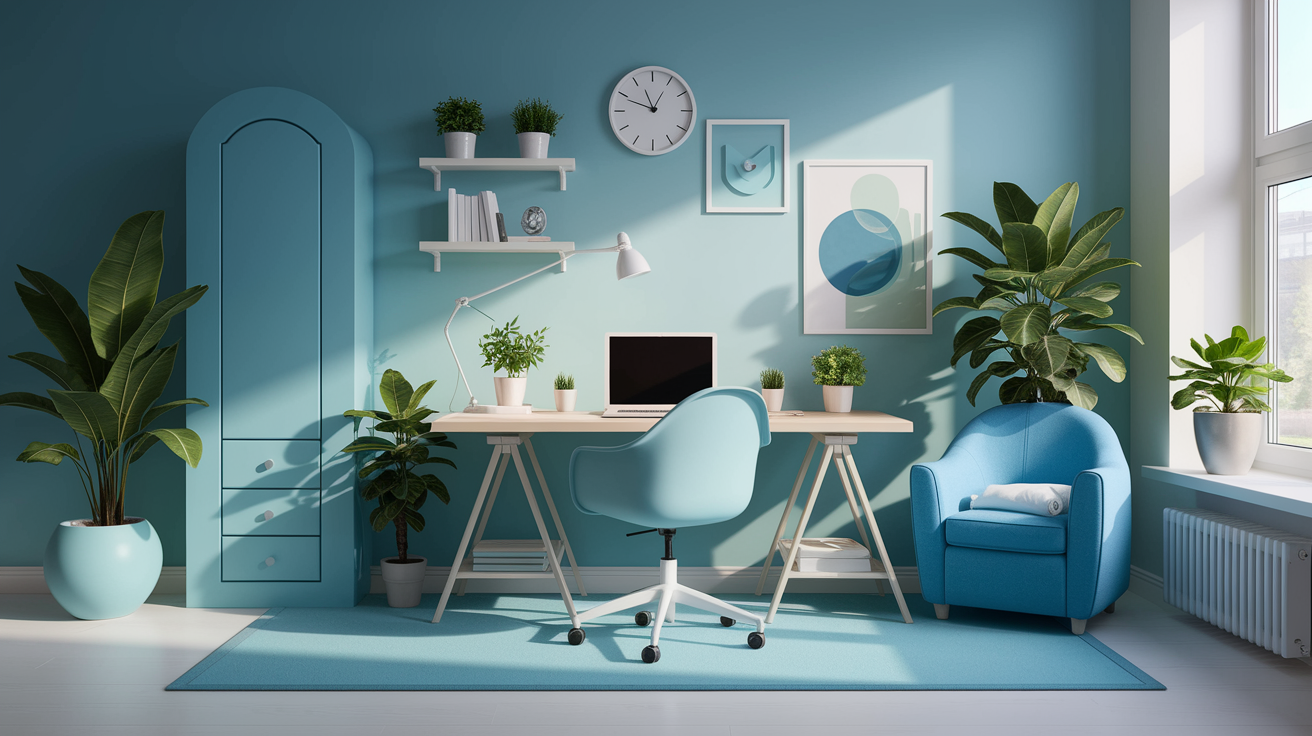
Cool tones frequently signal calm, clarity, and a hushed professionalism. They calm anxiety in homes, clinics and screens, and assist with concentration. Color influences mood and decision-making — a cool palette, for example, can reduce the pace of a space and steer users in how they interpret a brand or a product.
Evoking calmness
Soft blues and muted greens can slow visual noise. They resonate of water and sky and leaves, so the mind associates them with calm and air. Designers reach for blue‑green to blue‑violet, plus many grays, when they want calm and deeper reflection.
The concept of "warm" and "cool" colors dates to the late 18th century, and it continues to shape how we interpret space and mood. Bedrooms, spas, and wellness apps profit from pale aqua, sage, or misty teal. These colors reduce stress signals and quell hard edges of an active day.
In the thin light of winter, cool tones can lead us into contemplation and stillness, though too much can wander into the shadows of low mood. Lighter cool shades help small rooms or tight UI layouts breathe larger. They thrust walls and panels away, so the eye feels air and space.
Coupling a cool field with a warm accent can even simulate a 3D effect on a flat page. Cool blue palettes slay visual noise. Less high‑chroma notes equals less distraction, which helps the mind relax. Gray provides a solid foundation, but can drift gloomy if not buoyed by crisp white or an airy blush or warm wood.
Building trust
Cool blues and greys communicate dependability and seriousness, making it seem professional and secure. Banks, insurance companies, clinics, and law firms use them to communicate professionalism and reliability. Understated blue‑gray on a logo or dashboard connotes process and standards and steadied hands.
For packaging, slate, steel or smoke can look genuine and artisan. Matte cool finishes shun the hard sell and allow your details to sparkle. Brands with conservative or technical audiences often keep an 80/20 split: 80% cool main tones, 20% warm accents for approachability and calls to action.
Creating distance
Cool palettes provide room and a hint of aloofness, handy in minimalist chambers or contemporary floorplans. They clear the stage so the important material pops. In interfaces, cool backgrounds direct focus to buttons and information without glare or promotion.
Excessive cool can seem aloof. Counterweight with warm wood, skin‑tone imagery, or diffuse light. For exclusivity, go with deep navy, charcoal, or blue‑violet then punctuate with brass, cream, or a single warm coral. The contrast maintains polish yet remains human.
Where to use a cold palette
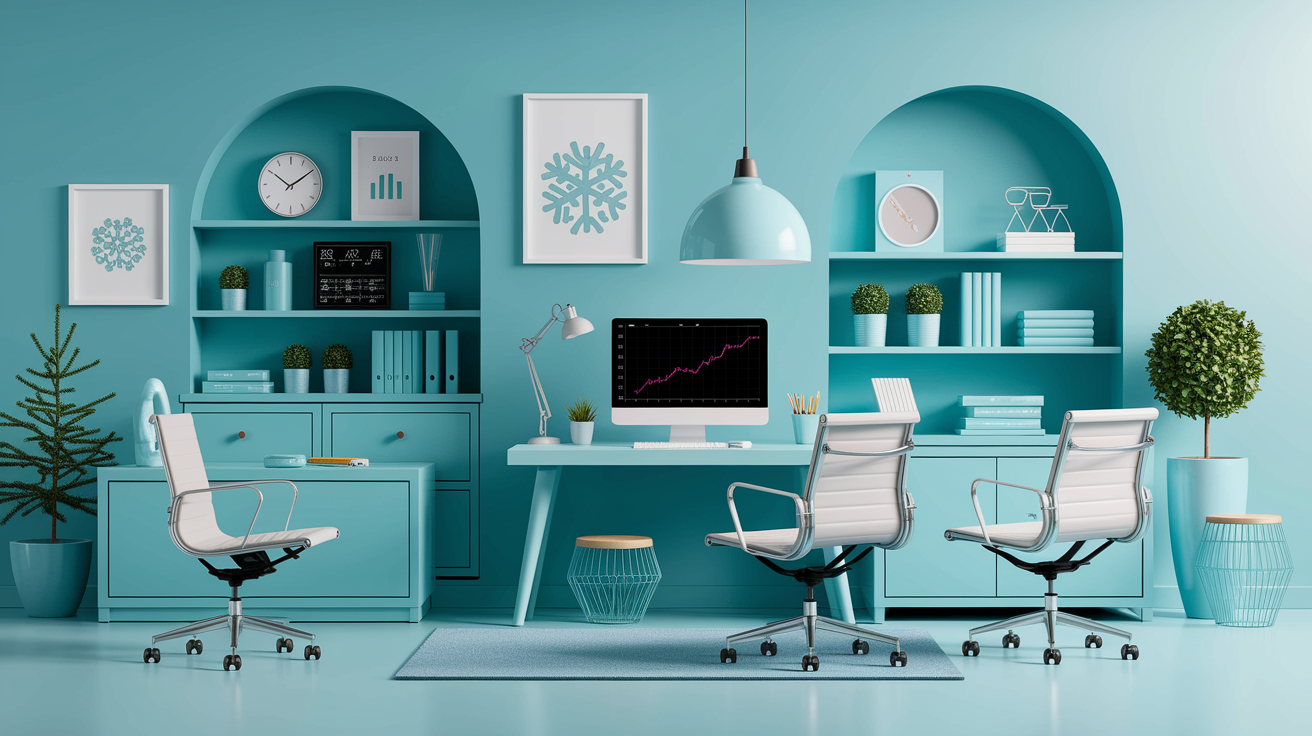
Cold palettes dazzle in domains that value clarity, accuracy, and composure—tech, medical, and finance—where credibility and attention are important. They translate well in seasonal labor (winter, clean launches) and remain firm for year-round brands.
They work in interiors where calm is key: bedrooms, bathrooms, and bright rooms that get strong natural light, since cool hues bounce light and can make spaces feel larger and more serene.
Best-fit projects: fintech dashboards, SaaS platforms, medical clinics, lab packaging, wellness apps, consulting firms, coworking hubs, minimalist interiors, galleries, coastal hotels, alpine retreats, museum guides, data-heavy reports, environmental campaigns, winter retail windows, product photography with metal or glass.
Corporate identity
Steel blue, slate gray and cool charcoal set just the right professional tone for logos, wordmarks and stationery. These colors come across accurate and trustworthy, which works for audits, cybersecurity and investigative services.
Use that same cold palette across decks, sites, apps, print, and social so the brand feels cohesive in every touchpoint. Use a cold palette where necessary, repeating a few anchor colors and sharp tints for hierarchy.
Coordinate the cool base with neutrals—soft white, bone, fog gray—for a crisp, modern aesthetic. Or a thin line of icy teal or cobalt, which can add presence without noise.
Restrict main colors to two or three, and then create dimension with shades and tints. This maintains consistency and prevents color drift among teams and vendors.
Healthcare spaces
Opt for soothing blues and gentle greens in patient rooms and waiting areas to reduce tension and stabilize heart rate. Pale aqua walls, misty blue curtains and sage upholstery set up a serene foundation.
Match the interior feel with branding that signals cleanliness and trust: crisp navy, mint, and white on signage, websites, and forms. Cool, clear hues assist navigation.
Cool tones on signs and uniforms pulls the environment together. Staff in slate scrubs near teal directional icons makes paths legible. Couple with warm wood, soft textiles and daylight so it never feels jarring.
Cool colors recede, so they make small consult rooms feel bigger and more airy.
Digital interfaces
Cold palettes provide apps and sites a slick, modern surface that cuts friction. Cool gray or mist backgrounds increase text contrast and reduce eye strain during long reads.
Add accents carefully—an electric blue for primary actions, a jade for success states. Too many accents disrupt concentration.
Check contrast ratios, as always for accessibility, particularly light blues on white. Go bold cold shades for drama in hero areas, but keep body UI calm for clarity.
Minimalist design
A cold palette is perfect for clean, pared-back interiors or graphics. Restrict to a handful of cool-toned colors + neutrals, and let negative space do the heavy weightlifting.
In homes, cold palettes soothe bedrooms and bathrooms, bounce sunlight around sunny rooms, and even make small spaces feel larger. In coastal or mountain environments, they reflect sea, sky and stone, bringing calm and a connection to nature.
In painting, cold palettes bring distance–think misty landscapes or still lifes with glass and green fruit. For rooms, combine cool walls with a warm accent—wood, terracotta or brass—for contrast and intrigue.
Rich, bold blues or greens can inject some quiet drama sans clutter.
Crafting your cold palette
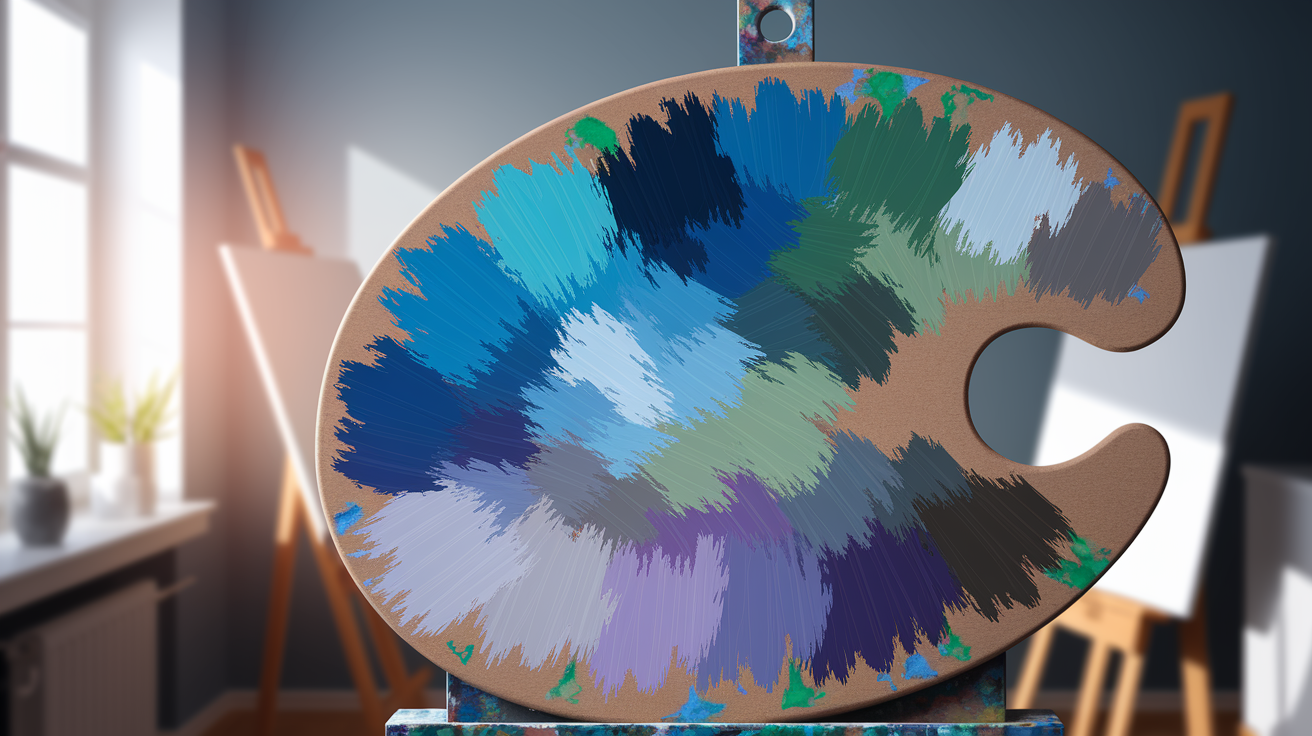
Work up from a limited light-&-cool color scheme, then adjust. Shoot for balance, depth, and real-world fit, not a formula. Try, adjust, and take notes so the palette evolves with your requirements.
Balance with neutrals
Whites, greys and beiges temper bright blues and greens, introducing dimension but not damping the energy. Titanium white moves value quick, soft greys keep contrast soft, warm beiges prevent the scheme from feeling too icy.
Employ neutrals as backgrounds, borders, and secondary text. Let cold tones dominate in areas of emphasis, and neutrals keep form in grids, margins, and large expanses.
Checklist for pairing:
- Ultramarine blue: titanium white for bright tints, cool grey (N7–N5) for crisp contrast, pale beige for human warmth.
- Teal/blue‑green: warm grey to mute, off‑white for crisp UI, and sand beige for hospitality/lifestyle.
- Mint/powder green: pearl grey to prevent saccharine, linen white for soft light, taupe for older brand voice.
- Steel blue/navy: light grey for legibility, charcoal for depth, cream for classic balance.
Mix in neutrals. As a rough guide, shoot for 60–70% neutral surfaces, 20–30% cool mid-tones, 10% deep accents.
Play with saturation
Saturation establishes atmosphere. Push it for intensity of energy, drop it for restraint.
High-chroma blues or greens convey sports, tech or signage. Consider something bright like ultramarine or emerald for primary actions or navigation.
Powdery, desaturated colors seem very placid. Ultramarine plus titanium white and a wee bit of burnt sienna to tone down without warming.
Mix ratios. Match a neon teal button with misty slate backgrounds, then offset a mid-sat steel blue for headings to maintain pace.
Add an accent
A warm accent awakens a cool scheme. Peach, coral or gold spark attention but don't commandeer the room.
Utilize accents for calls to action, icons, or small motifs. About: Designing your cold color scheme.
Pair accent undertone with your prevailing cool. Coordinating your cold palette: coral sits well with teal, gold goes with navy, and peach softens ultramarine.
Switch accents by season or campaign. Keep your basic cold palette consistent, then switch up the warm pop for freshness.
Consider texture
Finish alters the way color reads. Matte mutes glare, gloss accentuates saturation, texture lends shadow and dimension.
Whether in textiles or walls or screens, blend smooth and rough for interest without additional colors.
| Application | Matte | Glossy | Textured |
|---|---|---|---|
| Branding print | uncoated navy | spot-gloss teal mark | embossed cool-grey type |
| Interior walls | matte steel blue | satin teal trim | limewash grey accent |
| UI/UX | flat slate panels | glossy highlights sparingly | subtle noise on backgrounds |
| Fashion | wool navy coat | patent teal detail | ribbed grey knit |
Constructive mixing track really assists. Begin with burnt sienna, ultramarine blue and titanium white.
One method: make a large pile of burnt sienna, then form smaller, colder piles by adding more ultramarine to each. Another: begin with pure ultramarine and add burnt sienna bit by bit for controlled cooling.
Split piles to go both warmer and cooler, constructing transition piles that cover the gamut. Reduce the value strings to distinct steps to examine behavior, then create your cold palette — as with the warm set, but geared toward blues.
Blue is a primary; it holds the gamut. It's iterative—don't need to get it right 1st pass. Test swatches in context: small screens, large walls, dim light, bright daylight. Tweak value, saturation and neutral ratios until the mood and function fit.
Beyond the chill: subverting expectations
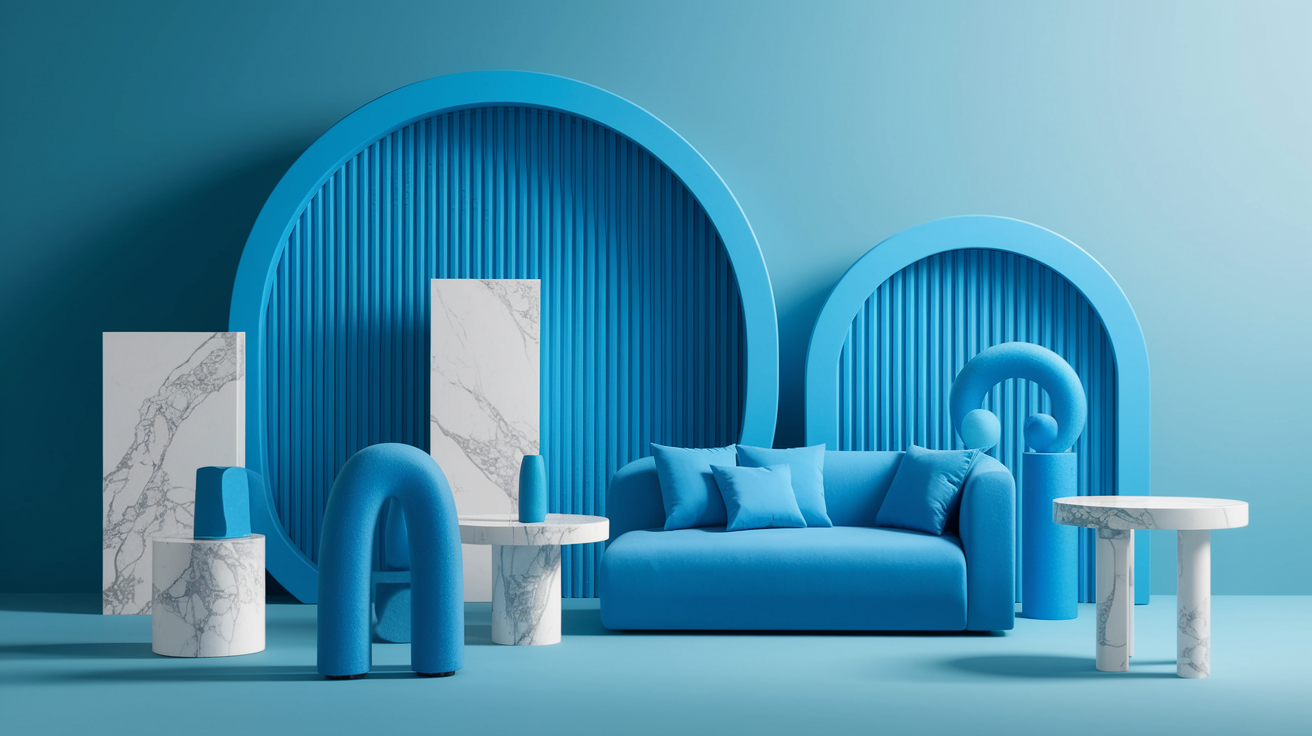
Cold palettes don't have to be impersonal. Blend context, texture and cultural consciousness to turn the tables, maintaining lucid command of tone across print, digital, spaces, fashion and film.
Cool luxury
Team frosty shades with metals for understated glam. Silver, chrome and brushed steel echo cool undertones and bounce light, making pale blue walls or slate textiles feel crisp, not cold. In retail or hospitality, a cool base with gleaming polished hardware says attention and artistry without yelling.
Deep blues and rich purples veer luxe when applied sparingly. A midnight suit with a graphite sheen reads exclusivity. Event design can employ indigo drape, smoked glass, and dim, cool lighting to establish a calm hush that still reads premium.
Throw in crystalline shimmers or glossy coats to glam it up. Now, think pearlized lacquer on cabinets, frost-like micro-glitter in print or high-gloss enamel on signs. These finishes snag light in sharp ways, so the palette comes across high-end rather than matte.
Minimalism assists. Take 80% of surfaces clean and quality, then allow a 20% strike—ice-blue marble, chrome trim, or one violet velvet chunk—to set the mood. The 80/20 rule maintains focus and resists chill overload.
Energetic blues
Electric and bright blues punch up a cool scheme. Neon cyan lines on a site, cobalt sneakers in a street look or a bold azure poster headline bring pace and movement without heating the palette.
Blue gradients play really well digitally and in motion. A pivot from midnight navy to fresh sky for speed, perfect for technology landing pages, app on-boarding or sports graphics. In movie titles, a sharp gradient pulse can establish a beat prior to a scene.
Pair with mint greens or purples to shake up the color triad. Cobalt with mint and lilac strikes a young fresh note. It's perfect for wellness, travel, or eco-tech, where freshness and clarity are important.
Employ these hues in youth or innovation campaigns. Sneak peek: beyond the chill, subverting expectations, high contrast grades suit action and thrillers, controlled cool schemes keep it readable for interfaces. Filmmakers frequently up-tempo blues in sci-fi to indicate future-forward worlds. Stylization frames the audience's reading prior to dialogue.
Cultural context
Meanings change by context and time. Blue can represent faith, grief, or melancholy by geography, and viewers keep pace as trends shift—low-contrast appearances don't have to be vintage anymore.
Adjust palettes for global projects. Calmer blues for a bank app in markets where trust is everything, brighter cyan where optimism pushes higher. For film, cool grading can soothe a scene, but cutting to reds can prepare a scare—audiences pick up these signals quickly.
Warm means alive and expansive, cool means still and concentrated unless you decide to undermine. Directors use color grading like music: it sets emotion, can invert genre codes, and can be as powerful as the score.
Horror and sci-fi rely on stylization, action prefers high contrast. Subversion works too: a tender scene in cool tones, or a chase in soft low-contrast, changes expectations and keeps attention.
Common cold palette mistakes
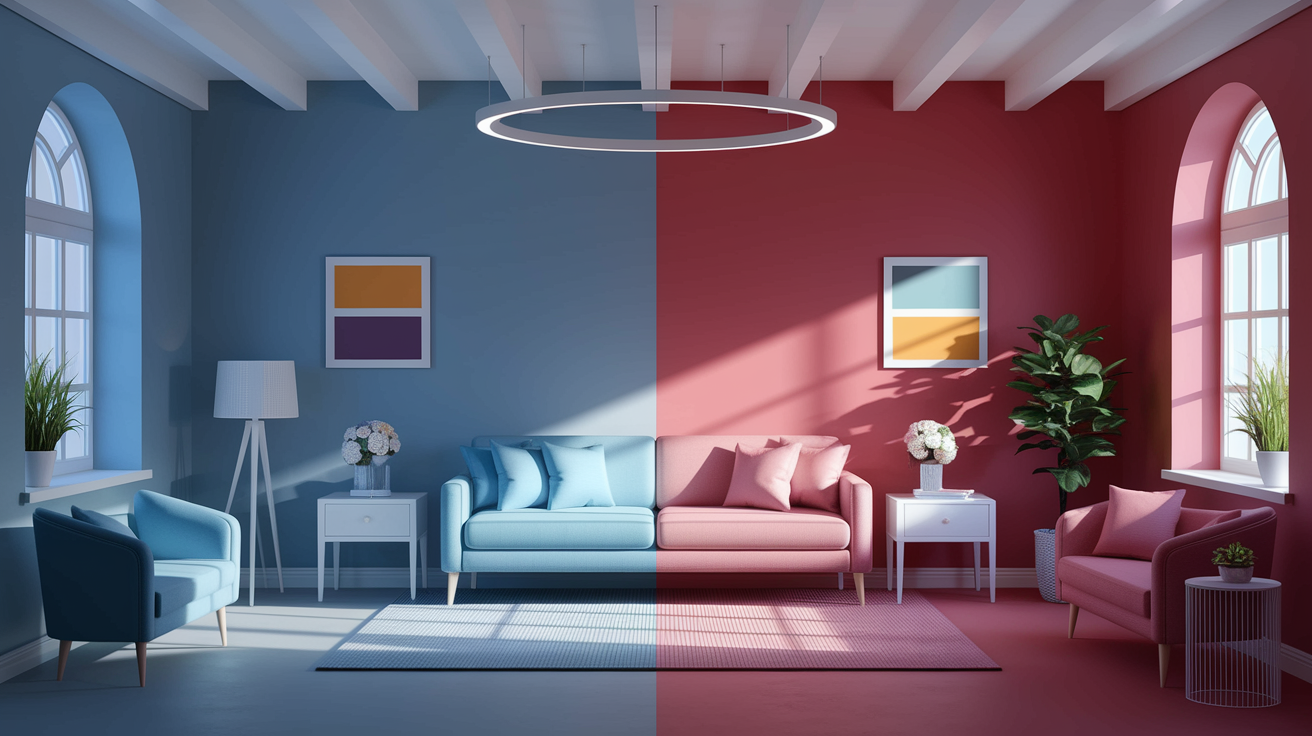
Cold palettes can appear calm and crisp, but little mistakes can rob warmth, muddle legibility or conflict with what's already in the space or on the monitor.
Overusing cold hues and crowding too many colors
Too many cool tones in one space can every so slightly slide from serene to sterile. A living room of ice blue walls, slate sofa, steel rug and chrome lamps can read clinic. Hold back by building a limited palette: one lead cool hue, two supporting tones, and a set of neutrals.
Balance is important. Match striking cools, such as cobalt or viridian, with mild neutrals—warm gray, oatmeal, or off‑white—so that space still feels human. Fight the temptation to throw in every pretty swatch. Five or more different colors will feel frenetic.
Use a close-knit family instead, and echo them in fabrics, paintings, and accessories to bring the scene together.
Mixing undertones without a plan
Cool doesn't mean one note. Blues can lean green, purples red and grays can masquerade as beige or blue. Undertones, when they fight, the eye picks up on. That navy sofa with a red-violet undertone can jar against a green-blue wall.
Map undertones first. Group cools that have a base, or bridge them intentionally with a neutral that carries both, like a blue-green gray. In print, this appears when a cyan headline conflicts with an indigo typeface.
Construct and annotate swatches with undertone comments, and test alongside white and near-black to detect shifts.
Skimping on contrast and accessibility
Cool-on-cool not only looks slick, but can be deleterious to readability. Pale cyan text on a light gray card, or slate links on a navy footer, doesn't pass minimum contrast. Try to provide definite luminance breaks between text and background, as dark letters on light grounds or vice versa.
Add neutral anchors: near‑white (#F7F7F7) against charcoal, or ink‑dark navy against soft mint. For UI, test contrast ratios and increase type where color contrast is close. Ringing electric blues can vibrate on screen, subdue them with desaturated partners so attention remains on narrative.
Skipping real‑world tests and context
Light can turn a cool palette from fresh to flat. Morning light can magpie green from a blue dusk can make a gray too muddy. Tape big paint swatches on the walls, look at them throughout the day and under warm & cool bulbs.
Repeat the same with fabrics and prints near floors, ceilings and trim – wood tones and stone stones the stage. One accent color can seem one‑dimensional; a second, smaller splash deepens the tableau.
Never, ever skip swatch testing—period—before you purchase gallons of paint.
Conclusion
Cold color constructs tranquility and concentration and sharpness. Blues, greens and cool grays create a diffuse, steady mood. Rooms seem larger. Screens seem clear. Brands read new. Soft slate wall to pale oak. A teal header brightens a drab page. Cold color palette Ice blue light helps a cozy studio feel airy.
Experiment with concepts – conduct mini trials. Change one focal point, like pillows or a flag. Observe the light at noon and at night. One bold cool tone, then anchor with soothing grays. Introduce some texture so the room isn't flat. Think linen and stone and matte paint and brushed steel.
So are you're ready to plan your cold palette? Post your best use-case or room size. I can write up three snappy combos to begin.
Frequently Asked Questions
What is a cold color palette?
A cold palette is comprised of colors with cool undertones. They typically feature blues, greens and violets, along with cool grays and icy neutrals. These colors tend to be calm, fresh, and distant. They do well for intense, contemporary, or technology-driven layouts.
How do cool tones affect mood and behavior?
Cool tones decrease visual clutter and stress. They can indicate trust, clarity and professionalism. In workspaces, they promote concentration. In healthcare or wellness contexts, they induce calm. Just balance them with texture and light to prevent a sterile aura.
Where should I use a cold palette?
Apply it to offices, clinics, tech products, finance brands and minimalist interiors. Cool palettes fit sites that require crispness and readability. They fit small spaces, since they visually recede and have an open feel. Tune saturation for context and audience.
How do I craft a balanced cold palette?
Begin with a single anchor color, such as navy or forest green. Introduce two complementary cool colours. Opt for a neutral spectrum (cool gray to off-white). Add one more saturated accent for contrast. Try it in light and dark backgrounds. Verify accessibility contrast ratios.
Can I mix warm accents into a cold palette?
Yes. Warm highlights breathe life and hierarchy. Go for muted terracotta, soft peach, or brass. Keep accents below 20%, please. This still maintains the cold feel but directs focus. Try it in context to make sure you don't clash or over-warm the scheme.
What are common mistakes with cold palettes?
Overusing pure blue or gray can feel flat or cold. Overlooking lighting alters color. Low contrast impedes readability. Forgoing texture renders designs sterile. Don't just throw too many cool hues together without hierarchy. Always prototype and get feedback.
How do I prevent a cold palette from feeling sterile?
Incorporate texture, organic elements, and gentle lighting. Employ different values and gentle gradients. Add warm neutrals in small doses. Incorporate photography featuring people. Maintain balanced whitespace. All of these selections keep the design cool but inviting.